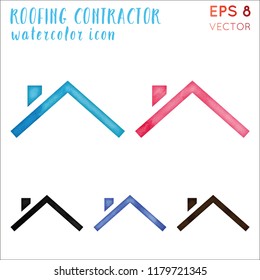An Assessment Of Inside Versus Outside Paint: Fundamental Distinctions And Their Applications
An Assessment Of Inside Versus Outside Paint: Fundamental Distinctions And Their Applications
Blog Article
Material Composed By-Fitzpatrick Meyers
When you're selecting between interior and exterior paint, it's necessary to recognize their essential distinctions that affect both efficiency and visual appeals. Inside paints are crafted for lower VOC degrees and smoother surfaces, making them ideal for interior spaces, while exterior paints are created to sustain harsh weather and UV direct exposure. Each kind serves a distinct objective, but recognizing when to use one over the various other can substantially affect your task's result. So, what variables should you consider when making your option?
Composition and Formula
When picking in between interior and exterior paint, understanding their make-up and formulation is essential. Inside paints normally consist of a lower amount of unstable organic compounds (VOCs), making them safer for indoor air top quality. You'll notice they often have a smoother finish, which improves their capacity to stand up to discolorations and enables less complicated cleaning. They're designed to withstand the roughness of interior settings, including varying humidity degrees and temperature variations.
On the other hand, exterior paints are formulated to endure harsher conditions. They typically contain greater levels of pigments and ingredients to resist fading from UV rays, as well as to stop mold and mold and mildew development. Their structure includes a lot more binders and materials, which offer better adhesion to surfaces revealed to the components. This guarantees the paint can hold up against rain, snow, and fluctuating temperatures without peeling or fracturing.
Performance and Resilience
Examining performance and longevity is crucial when picking in between exterior and interior paint. Inside paint is created for surfaces that experience much less damage. It usually stands up to fading and scuffing, making it excellent for living rooms and bed rooms. Nevertheless, it might not stand up well in high-moisture locations like bathroom and kitchens without proper solution.
On the other hand, exterior paint faces harsher conditions. It's crafted to hold up against UV rays, rainfall, and temperature level changes. This kind of paint often has additives that prevent mold and mildew and mold development, making certain longevity in various environments. When you use outside paint, you can expect it to last a number of years much longer than interior paint, offered it's applied properly.
Another vital difference hinges on the finish options. https://daltonjvfsb.aboutyoublog.com/33629126/to-make-certain-the-success-of-your-painting-project-it-is-very-important-to-be-knowledgeable-about-the-considerable-differences-between-interior-and-exterior-paint-discover-the-essential-info-you-require-prior-to-beginning-your-job have a variety of finishes for aesthetic appeal, while outside paints prioritize sturdiness over luster. If you're searching for something that can take care of the components, outside paint is your best option.
On the other hand, if you're concentrated on interior aesthetic appeals with much less concern for severe conditions, indoor paint could be appropriate. Eventually, your choice should align with the specific demands of the setting.
Visual Factors to consider
A fresh coat of paint can change an area, yet visual considerations play an essential duty in your choice between interior and exterior alternatives. When you're selecting paint, consider the mood you intend to create. Inside paint permits you to discover a wider variety of shades and coatings, allowing you to reveal your individual design and improve your home's ambiance. Whether you choose soft pastels or vibrant hues, the ideal indoor paint can make your areas feel comfortable, lively, or calm.
On the other hand, outside paint needs to align with your home's style and the surrounding atmosphere. Below, you're not simply making a design declaration; you're also thinking about curb appeal. Choosing shades that integrate with your area can improve your home's worth and aesthetic appeal. Remember that exterior paint is additionally based on fading and weather modifications, so choosing a timeless color can conserve you from frequent repainting.
Ultimately, take into consideration how each alternative fits your vision. By straightening your paint option with your desired visual, you can develop spaces that show your individuality while preserving functionality.
Conclusion
When it involves picking paint, comprehending the vital distinctions between exterior and interior choices is vital. Inside paints focus on looks and low VOCs, making them perfect for enhancing your interior rooms. On painter , outside paints are created for longevity and climate resistance, protecting your home from the elements. By considering your particular needs and the setting, you can with confidence select the ideal paint to achieve the look and longevity you want for your room.
